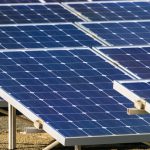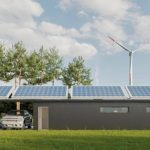
Things To Know: On Grid Solar Systems
On-grid solar energy systems generate power employing a solar energy system and are directly connected to the utility power system. These systems send excess power generated by the solar energy system to the utility grid, and consumers get compensated for the additional power fed back. These systems add collaboration with the facility grid. In the case when there’s not enough sunlight to satisfy your business needs, the system runs on the facility supplied by the grid.
On grid system in India is far and away from the foremost common and widely used method for homes and businesses in India. These systems use standard solar inverters and are generally placed on top of the roof. But, the most appealing to most people on grid solar systems is that they’re tied to your local utility’s GRID. Excess solar energy generated is exported back to your local electricity grid, allowing you to pay a ‘feed-in-tariff (FiT) or build credits that you can live at the top of the year during a process called ‘net metering. This on grid solar system is what most residential homes will use, as you’re covered if your system either under or over-produces. Your electric utility company acts as your battery space.
The on-grid system is also referred to as a grid-tie or connected system. This is often the only cost-effective type for systems compared to off-grid and hybrid systems for electricity saving or reducing the bill.
The solar inverter converts the DC electricity produced by the solar panels into AC electricity in this system, which may be used directly for reception or business.
Table of Contents
Advantages Of On-Grid Systems:
- You do not need to buy an upscale battery backup system to store any excess energy; this utility may be a 100% efficient battery in itself
- You will not get to implement any change to your lifestyle or means of conserving electricity
- You will love receiving your credits from your local electricity grid provider for any unused energy that you have generated (on top of already reduced electricity bills!)
- On grid solar systems are very cost-effective and straightforward to put in.
- Businesses can recoup the value of their investment by offsetting electricity bills in only 3-8 years. If a personal, commercial or industrial building sets up a solar PV rooftop system, it’ll be eligible to avail an ‘Accelerated Depreciation Benefit’, which is currently 80% during a year. At this rate, a business can completely depreciate the entire value of the project in approximately four years.
Disadvantages Of On-Grid Systems:
- On grid solar systems are battery-less and thus unable to function or generate electricity during a blackout, thanks to safety reasons. As blackouts usually occur when the electricity grid is broken – if the solar inverter was still feeding electricity into a damaged grid, it might risk the security of the people repairing the fault/s within the network.
- They can’t produce solar power and reduce your power bill at night-time or when there’s no sunlight.
- They provide you with less incentive to conserve energy!
About 1kw System
If you would like to run an approximately 800-watt load or your house load is smaller than 800 watts, then a 1kW system is best for you. To run the load, 1st priority will be the system, and 2nd would be the grid or batteries. It needs 100 sq. Feet roof space for a solar on grid system installation. The worth of the system depends upon the sort of system. The commercial solar installers can give you the best advice regarding which is the best type.
On Grid 1 Kw System:
This system is additionally referred to as a grid-tie system because it connects with government electricity. A 1kW system produces 4 units per day on average. Solar net-metering applies to this technique meaning balance electricity you’ll export to the government. And the government will adjust an equivalent in your upcoming electricity bill. 30% to 70% subsidy from the government of India is additionally available.
Off Grid 1kw Solar System:
Off-grid is also referred to as a stand-alone power grid or with a solar panels-based system. The off-grid system has a battery for backup. The solar panels will run your load directly on priority; if the solar panels cannot bear your connected load, the battery helps you run your connected load. An off-grid system allows you to store your solar energy in batteries to be used during the facility cut and when the sun is additionally not available. The residential solar installers will give you the best insights.
Hybrid Solar System:
A hybrid system (solar battery storage with grid connection) has both the functions of a grid system and an off-grid system in it. Or we will say that it’s three sources to run load (solar energy, solar panels, and government electricity). This technique stays connected with batteries, also as the government grid. The hybrid system is suggested for those people who face electricity cuts and want to export the additional electricity to the grid.
Popular Blogs:








